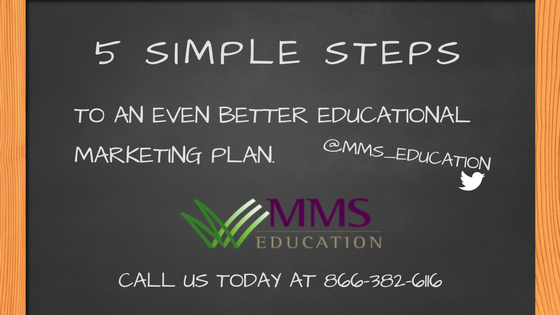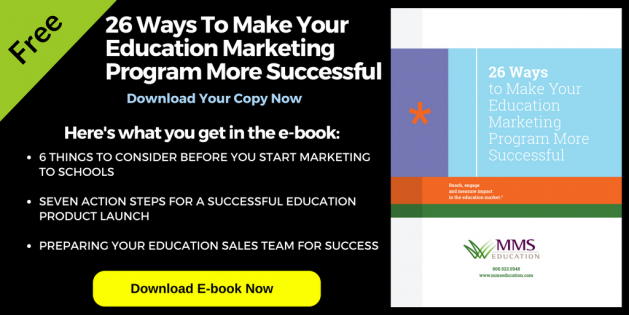 Educational products marketing plans involve creating and coordinating many moving parts, from the initial big idea to the details of measuring results. It’s a big job to manage an educational marketing plan, much less tracking and optimizing it along the way. Here are five simple steps to help you make the big job of marketing just a little bit easier.
Educational products marketing plans involve creating and coordinating many moving parts, from the initial big idea to the details of measuring results. It’s a big job to manage an educational marketing plan, much less tracking and optimizing it along the way. Here are five simple steps to help you make the big job of marketing just a little bit easier.
- Track! Always make sure to track your educational products marketing and sales using metrics determined in advance so that you can use those insights to have better, more effective campaigns down the road. It may take time to set this up, but it’s well worth it in the end.
- Survey! For the best insights into your program, consult with the people who actually use it. Ask your current clients to fill out a survey about what works, what doesn’t, their likes and dislikes about the program, and more. By asking the people who best represent your target audience—the users themselves—you’ll gain valuable insight that will help you to plan for the future, promote your best features, and make your program even better. Plus, those current clients will likely appreciate you asking for feedback and feeling that their voices are heard, and therefore be more likely to continue using your products in the future.
- Collect! Be ready to not only collect data, but be prepared to manage it, too. Investing in the setup of a database ahead of time will help you in the long run. For instance, if you have an online program, and you gather information from users when they register and track what they do in the online components of your program, you’ll be able to see who is active, what users are doing online, and better understand how they use your program. You’ll also be able to compile demographics which will help you market to the appropriate audience in the future. Plus, keeping detailed records of your participants can help you provide better customer service, bringing clients back year after year!
- Analyze! Though it takes some time and energy, website analytics are a great window into your users’ experiences and behavior on your website. Tracking and analyzing online metrics will tell you which pages are being utilized and which ones aren’t so that you can edit or even eliminate the parts of your website that aren’t working—and learn what is working well.It can also alert you to other issues. For example, if your bounce rate on a specific page is very high, meaning many people are leaving your site immediately after arriving that could indicate a problem such as your website taking too long to load. Fixing that simple issue could make a big difference in your online sales and signups.
- Reach Out! People love to talk, and they’ll likely give you some great feedback if you ask. Asking real participants what they think of your program is a great way to talk to real people, understand your programs from a different perspective, and get real feedback that you may not have considered before. Plus, if they have good things to say, you can use their feedback in future marketing efforts—and even if they don’t, you’ll know exactly what to improve.
Clients choose MMS Education because of our deep understanding of marketing educational products, backed by nearly 40 years of working with schools, systems, administrators, and agencies.
Most importantly, we embrace your mission and deliver on time and on budget, whether you’re outsourcing one specific project or need a complete turnkey operation.
Call us today at 866-382-6116 or fill out this form to see how MMS Education can help you reach, engage, and measure impact in the PreK-12 education market.

